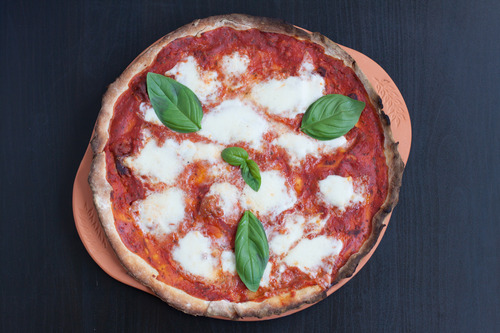Marcello's margherita pizza
 Sunday, October 9, 2016 at 1:26PM
Sunday, October 9, 2016 at 1:26PM 
This recipe from Marcello Basini, trader at Borough Market, is probably the closest you'll get to a proper pizza at home. A domestic oven is never going to give you the crisp base you get from a wood fired oven, but Marcello has some great tips to help you get as close as possible. This recipe first appeared on the Borough Market website as part of my series, I Am What I Eat, where I interview Borough Market traders about the foods that are important to them and why.
“If it’s a good pizza, I like it simple,” says Marcello Basini of Jumi Cheese. “As an Italian my favourite is the margherita.” Marcello uses a ‘mother’ or ‘starter’ for his pizza dough, but as most people are unlikely to have that to hand, I’ve given the option of using yeast as well.
He makes his dough the night before, then knocks it back in the morning and leaves it to rise again until the evening. You can get away with letting it rise for 2 hours first time, knocking it back and then letting it rise again for another 30 mins, but the longer it proves, the better.
 Vix |
Vix |  Post a Comment |
Post a Comment | 